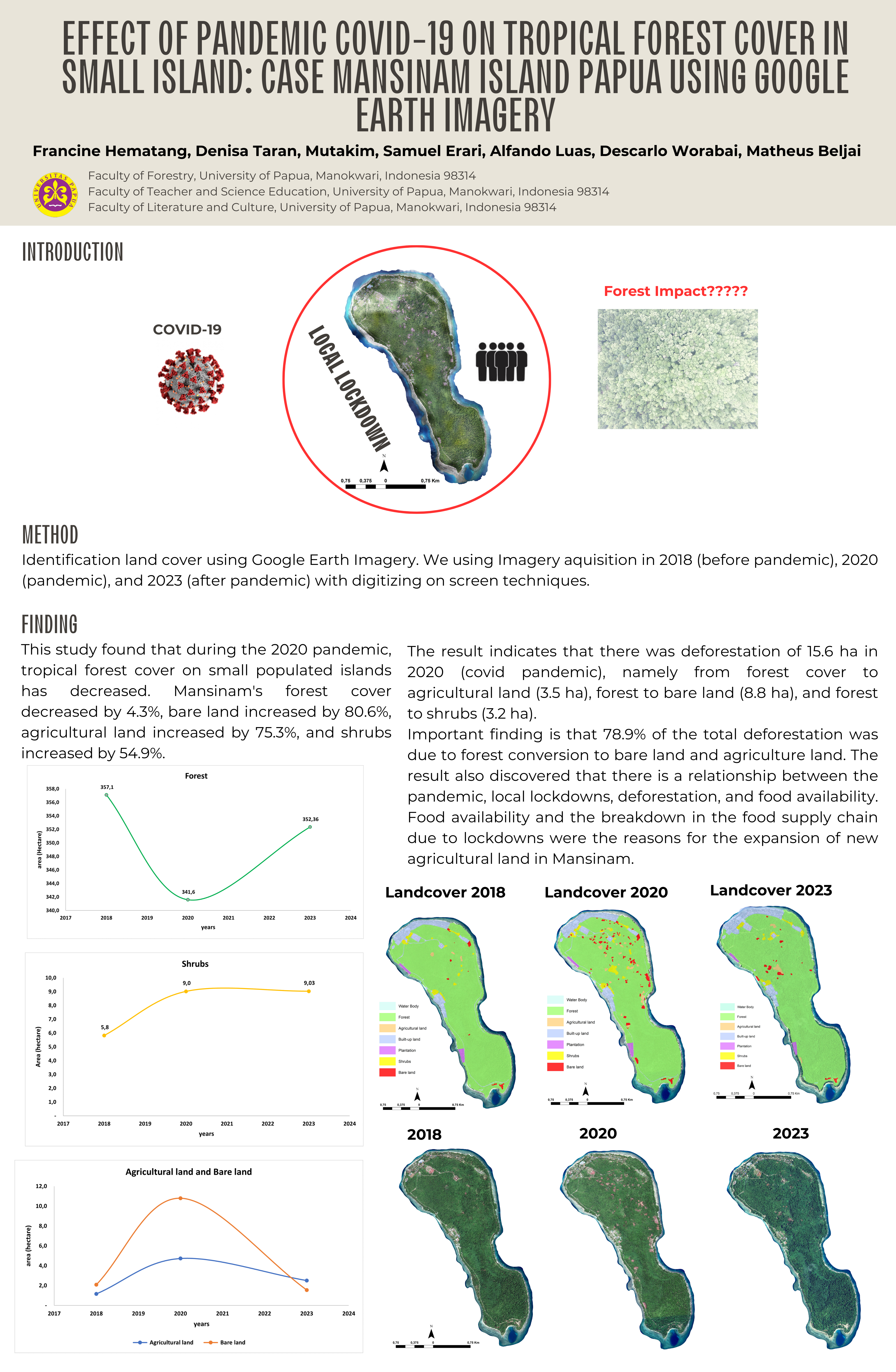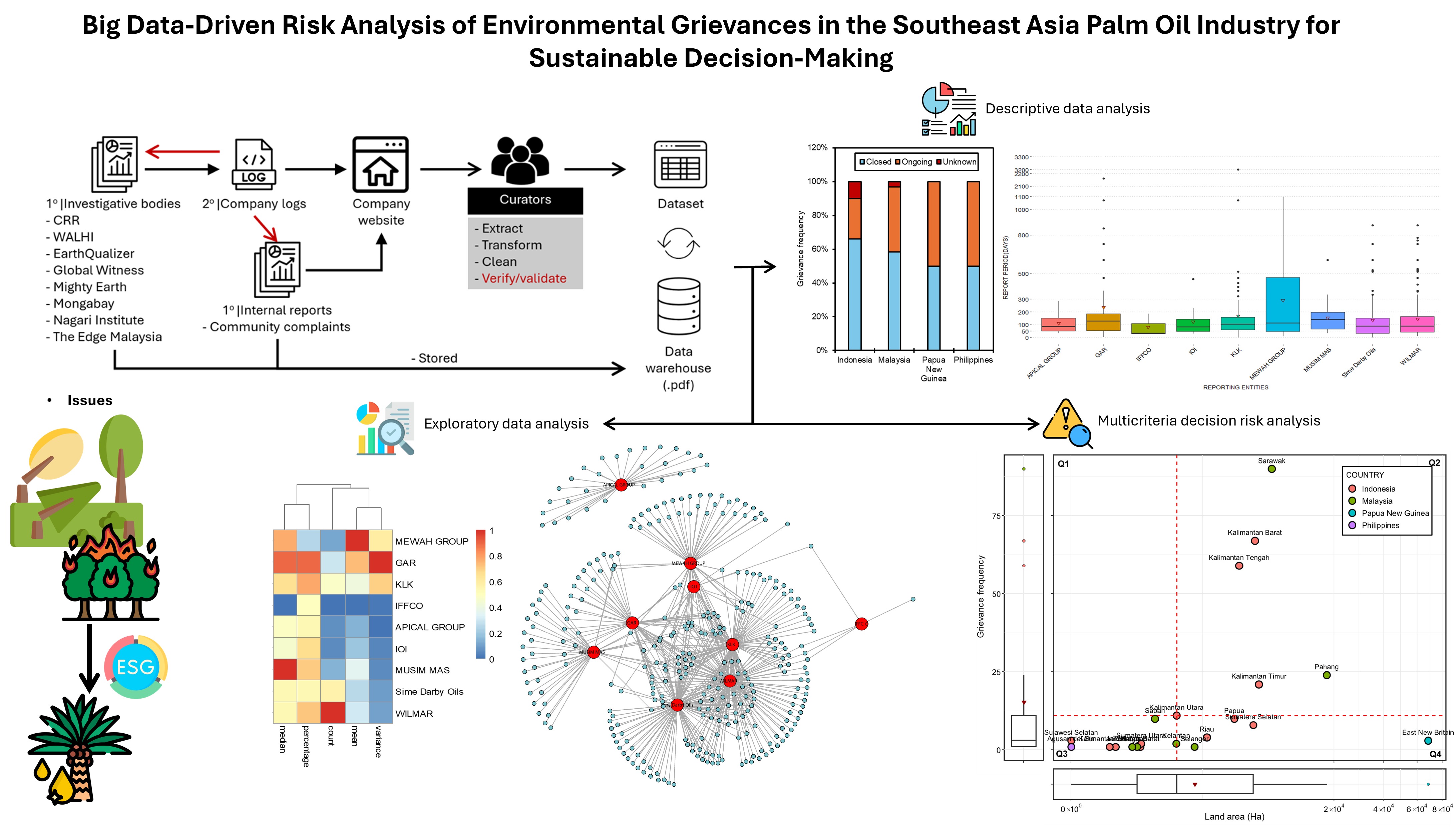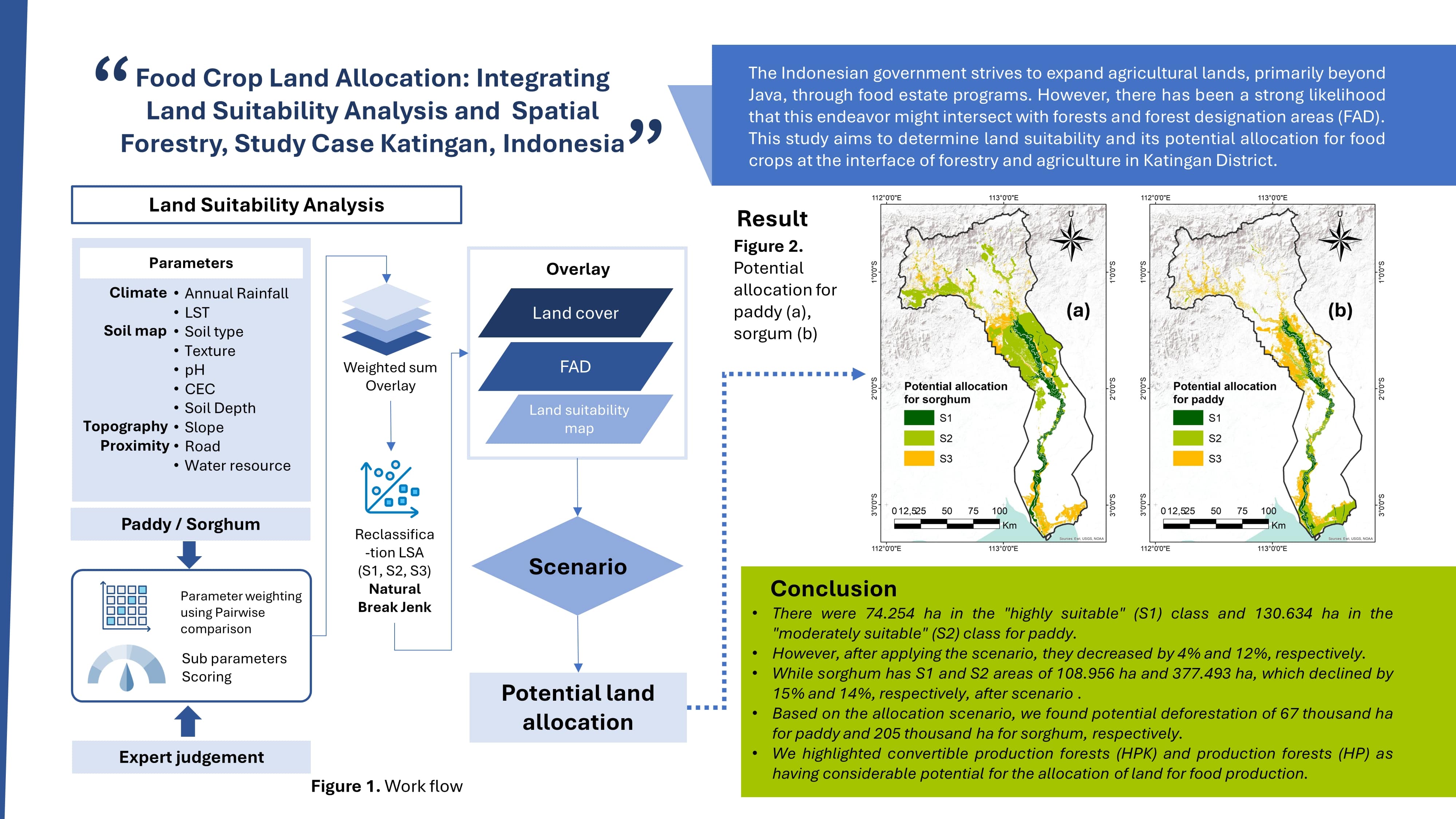Abstract
In the last 2 decades, deforestation had been an international issue due to its effect to climate change. This study describes a spatial modelling for predicting deforestation in Jambi Province. The main study objective was to find out the best spatial model for predicting deforestation by considering the spatial contexts. The main data used for the analysis were multitemporal Landsat TM images acquired in 1990, 2000, and 2011, the existing land cover maps published by the Ministry of Forestry, statistical data and ground truth. Prior to any other analyses, all districts within the study area were classified into 2 typologies, i.e., low-rate and high-rate deforestation districs on the basis of social and economic factors by using clustering approaches. The spatial models of deforestation were developed by using least-square methods. The study found that the spatial model of deforestation for low-rate deforestation area is Logit (Deforestation) = -2.7046 – 0.000397*JH90(distance from forest edge) + 0.000002*JJ(distance from road) – 0.000111*JKBN90 (distance from estate crop edge) + 0.000096 *JP90(distance from agricultural crop edge) + 0.044227*PDK90(population density) + 0.148187 *E(elevation) – 0.131178*S(slope); while for the high-speed deforestation area is Logit (Deforestation) = 9.1727 – 0.000788*JH90(distance from forest edge) – 0.000065 *JJ(distance from road) – 0.000091*JKBN90(distance from estate crop edge) + 0.000005 *JP90(distance from agricultural crop edge) – 0.070372*PDK90(population density) + 11.268539*E(elevation) – 1.495198*S(slope). The low-rate and high-rate deforestation models had relatively good ROC (Relative Operating Characteristics) values of 91.32% and 99.08%, respectively. The study concludes that the deforestation rate was significantly affected by accessibility (distance from forest edge, distance from estate crop edge, edge from agricultural land), biophysical condition (elevation and slope) as well as population density.
Authors
WijayaP. A., SalehM. B., & TiryanaT. (2015). Spatial Model of Deforestation in Jambi Province for The Periode 1990–2011. Jurnal Manajemen Hutan Tropika, 21(3), 128-137. Retrieved from https://journal.ipb.ac.id/index.php/jmht/article/view/10795
Jurnal Manajemen Hutan Tropika is an open access journal which means that all contents is freely available without charge to the user or his/her institution. Users are allowed to read, download, copy, distribute, print, search, or link to the full texts of the articles in this journal without asking prior permission from the publisher or the author. This is in accordance with the Budapest Open Access Initiative (BOAI) definition of open access.





